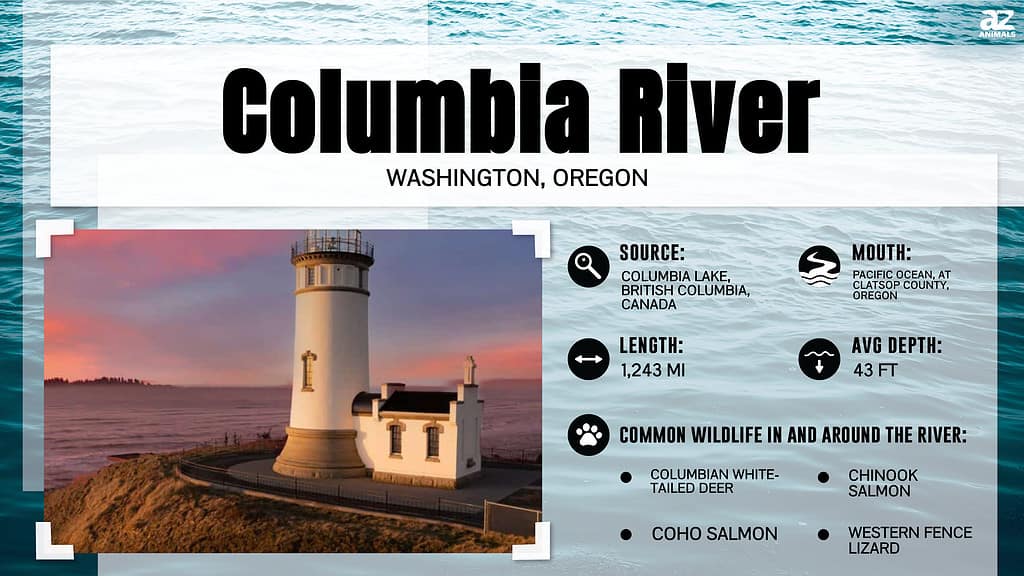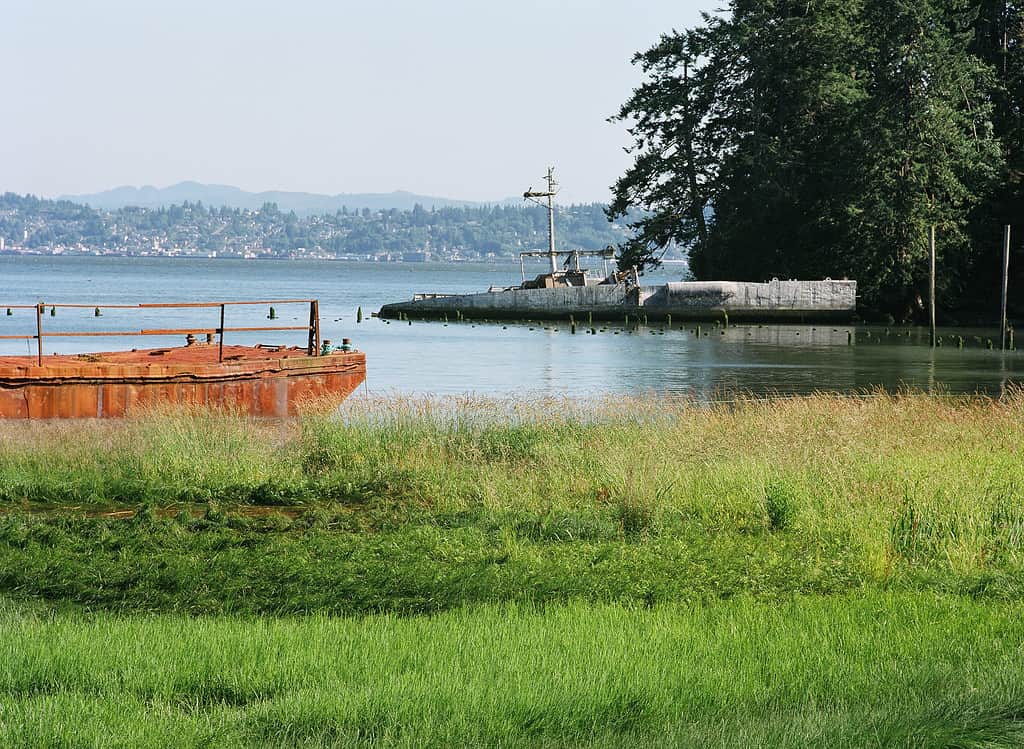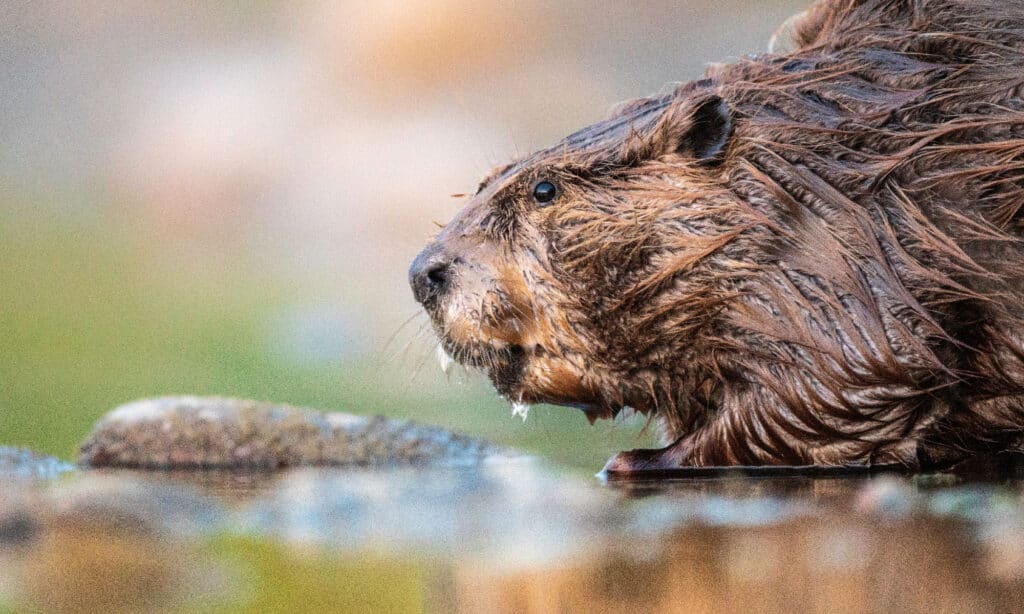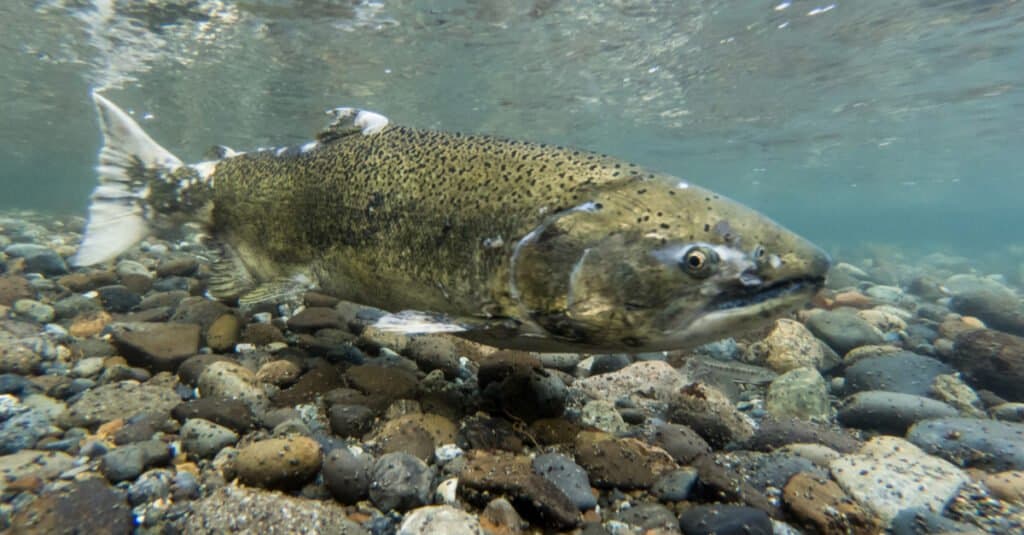Nature will never cease to surprise and impress curious people that seek out its beauty. The Columbia River is a natural marvel that does just that. It winds a great distance through Washington, Oregon, and British Columbia. This article will provide an explanation of the river’s geography, history, and wildlife residents. Then we will ask: how long is the Columbia River?

Geography
The Columbia River is a major North American river that forms part of the border between the states of Oregon and Washington in the Pacific Northwest. The mouth of the river opens into the Pacific Ocean just west of Astoria, Oregon. Interestingly, a shifting sandbar at the mouth of the river makes it one of the most hazardous areas in the world to navigate. The stretch of water has been responsible for so many shipwrecks that it holds the nickname “Graveyard of Ships.” It extends as far east as Kennewick, Washington, before extending north until Golden, British Columbia, near the border with Alberta.

A shifting sandbar at the mouth of the Columbia River makes it one of the most hazardous areas in the world to navigate and is responsible for many shipwrecks.
©Katwilphoto, CC BY-SA 3.0, via Wikimedia Commons – License
The largest tributary to the Columbia River is the Snake River. The junction between these two rivers is in Pasco, Washington. The Snake River originates in Wyoming, flows through Idaho, and terminates at its intersection with the Columbia River in Washington. Other notable tributaries are the Willamette River which joins the Columbia near Portland and originates in the Cascade Mountains, and the Okanogan River, which originates in British Columbia and meets the Columbia River near Brewster, Washington.
Indigenous People
The Pacific Northwest is home to dozens of Native American tribes, including the Coast Salish, Nez Perce, Chinook, Navajo, Cherokee, and Choctaw peoples. Many tribes used the Columbia River for sustenance, trade, and transportation. Most prominently, the river is a bountiful source of salmon. The Chinook, Nez Perce, Yakama, and Umatilla peoples were historically reliant on fishing and had close ties to the river. In fact, the most prolific fish in the river are Chinook salmon, or king salmon, which swim from the saltwater ocean into the river for spawning. This salmon species earns its name due to its significance to the Chinook tribe.
Historic Events
Lewis and Clark Expedition and the Fur Trade

Beaver populations were greatly impacted by the fur trade in the 19th century.
©Layne VR/Shutterstock.com
The famous Lewis and Clark exploration of the western United States occurred from 1804 to 1806. During this expedition, Fort Clatsop was established at the mouth of the Columbia River near present-day Astoria, Oregon. During the early 19th century, fur trading dominated the region. British and American fur trading companies, like Hudson’s Bay Company and the Pacific Fur Company, established posts along the river and created conflict with the area’s indigenous people. The fur trade during this period had substantial, lasting effects on the targeted animal species that are still apparent today. The trade was particularly detrimental to beavers, otters, martens, minks, and foxes.
The Oregon Trail
The Columbia River was also a major component of the Oregon Trail and western expansion in the mid-19th century. The river provided a mode of transportation for settlers and enabled westward expansion; however, it also led to increasing conflict with Native Americans. The Oregon Trail tragically amassed an incalculable number of casualties among indigenous people because of racial violence and the transmission of foreign diseases by colonizers. The Columbia River was a critical facet of tribal life for millennia that was abused by outsiders and exploited during westward expansion.
Hydroelectric Developments

The Bonneville Dam is one of many dams located on the Columbia River.
©J-B-C/Shutterstock.com
Later developments along the Columbia River include hydroelectric power establishments. Arguably the most well-known dam on the river is the Grand Coulee Dam. This dam is among the largest in the United States and one of the highest-capacity hydropower facilities in the country, with a capacity of over 6,800 megawatts. It was completed in 1941 and is located along the Columbia River in Washington State. Other major dams are Bonneville Dam, Chief Joseph Dam, The Dalles Dam, and John Day Dam.
Wildlife

Salmon, including the large Chinook salmon, are iconic inhabitants of the Columbia River.
©Kevin Cass/Shutterstock.com
Today, many animal species live in the Columbia River. The river traverses several ecosystems, including coastal estuarine, riparian, wetland, forest, and plateau environments, which allows for diverse wildlife. Notable mammal residents are river otters and beavers. Birds include bald eagles and great blue herons. Among the many fish species, there are steelhead trout, sturgeon, and more than 5 species of salmon– Chinook, coho, sockeye, chum, and pink salmon.
How Long is the Columbia River?

Columbia River is very long and has the largest water output into the Pacific Ocean of any river.
©iStock.com/JPLDesigns
After learning about the geography, history, and inhabitants of the river, let’s find out how long it is. The Columbia River is an impressive 1,243 miles long! It is one of the longest rivers in North America. The United States portion of the river is approximately 875 miles, and the section in Canada is about 367 miles long. If you are ever visiting the Pacific Northwest, be sure to see this magnificent feat of nature and go for a swim while you are there.
The photo featured at the top of this post is © iStock.com/Chaitra Kukanur
Thank you for reading! Have some feedback for us? Contact the AZ Animals editorial team.






